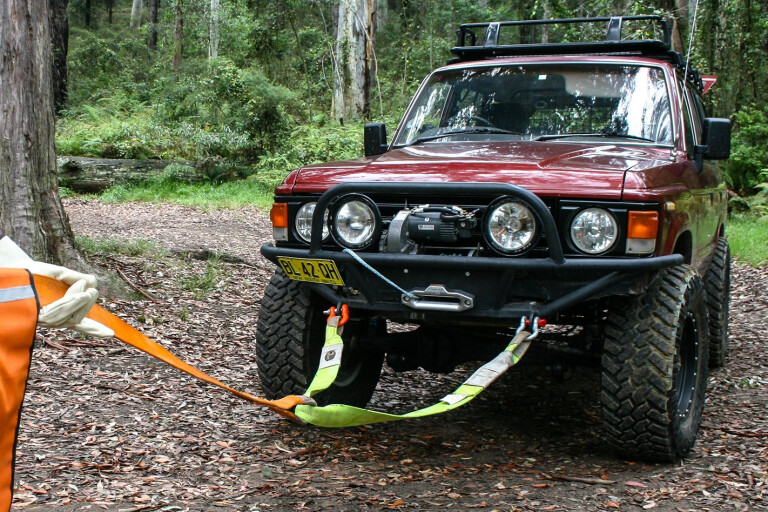
You can go bush without a recovery kit, but you really shouldn’t. It’s as simple as that. At least that’s what we’ve all been told for the past couple of decades. In fact, it’s almost impossible to pick up a four-wheel drive magazine without reading that safety and recovery gear should come before just about anything, including your first tank of diesel. The ability to safely and quickly self-extract is something that should be put before any single aspect of off-roading. There isn’t a camp oven or light bar that should be higher on your shopping list than the simple bow shackle.
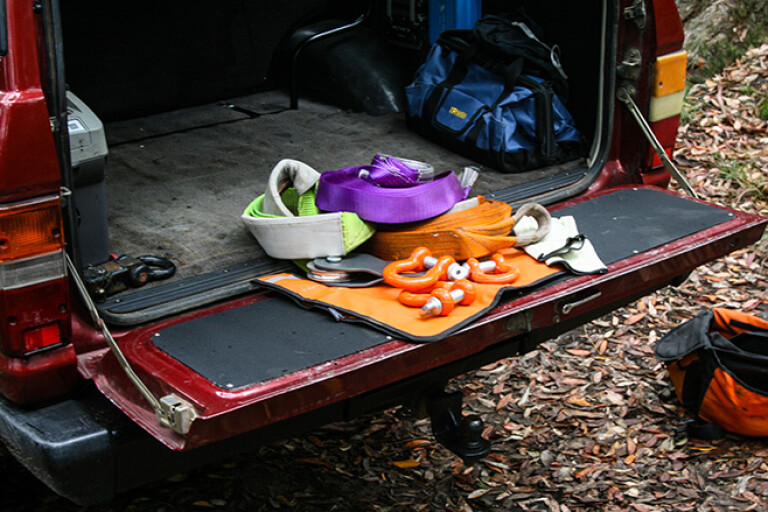
It all sounds good in theory – except we’ve rarely been taught what should actually be in a recovery kit, or even how to identify or use the components in question. What’s included in a recovery kit has more or less been left up to manufacturers.
As a result, customers are often uninformed before plonking down their hard-earned cash, attempting to do things the right way. We’re aiming to rectify that. With a camera in hand, we’ve set out to put together a basic guide of what your kit should have in it, and what each item is actually for.
SLINGS AND STRAPS
The main items in a recovery bag are slings and straps, and they’ve all got labels on them listing their intended use, such as snatch strap or tow strap. But they don’t come with an explanation of why they’re suited to those applications.
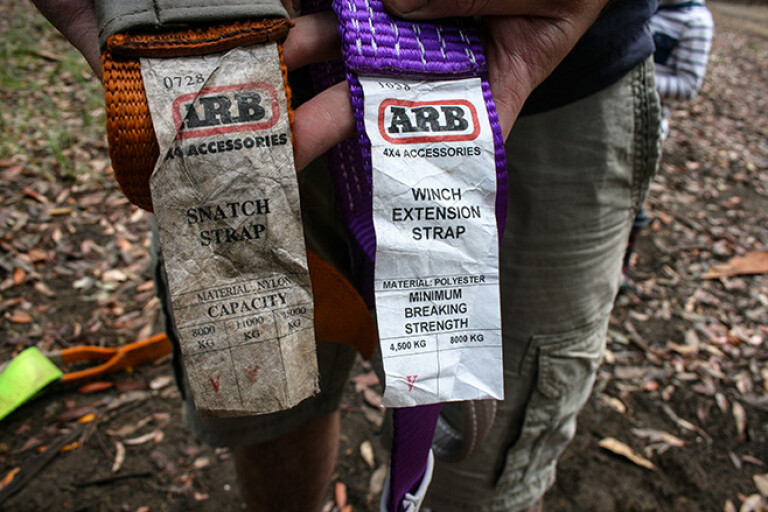
If you’re reading this, you’re obviously the kind of person who wants to know the ins and outs of your equipment and how to safely use each piece. So we’re here to help point you in the right direction.
Any recovery kit worth its salt is going to have at least three straps: a snatch strap, a winch extension strap and a tree trunk protector. A more comprehensive kit can include tow straps and load equalising straps, although you can do without those in most circumstances.
The snatch strap should be your go-to recovery device in 90 per cent of situations, but there are a few important things you should be aware of before purchasing or using one. Despite a snatch strap’s appearance, it functions more like an elastic band than a rope. In a recovery situation, the strap will expand as you pull it and then attempt to snap itself shut when it reaches maximum stretch. This elasticity smooths out the recovery process and aids in applying more force to the stuck vehicle; the downside is repeatedly stretching the strap will weaken the fibres and lead to premature failure.

Snatch straps have a limited lifespan and should only be used for a handful of recoveries before they’re replaced. You’ll want somewhere near 25 per cent stretch in the strap and the breaking point should be two to three times the weight of the lightest vehicle being recovered.
Despite looking similar to a snatch strap, a winch extension strap is never a suitable replacement for the former. They’re designed to handle a static load rather than the shock loading from a snatch recovery, and they have a much lower maximum load rating. They are designed to be used in situations where a winching point is farther away than the standard winch rope can reach, or where extra length is required in multiple line pulls.
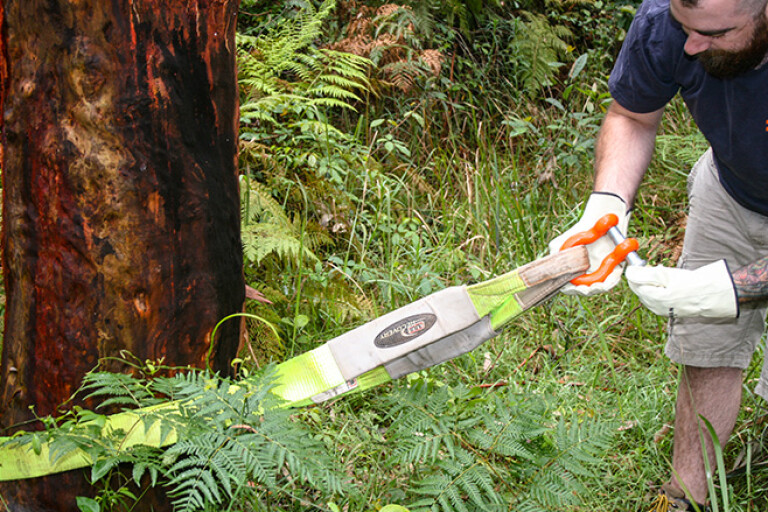
The final strap you’ll find in most kits is a tree trunk protector. For many tree species, losing an outer ring of bark can kill the tree. A tree trunk protector is a thick strap designed to spread the load over a larger area of the tree to prevent permanent damage occurring during winch recoveries. They allow the fitment of snatch blocks to aid in double line pulls or redirecting winching. They can also be used as a load equalising strap between two recovery points, although extra attention should be paid to ensure no damage occurs.
HARD PARTS
Your recovery kit should also have at least a handful of rated bow shackles, at least one snatch block (only if you have a winch), and a set of heavy-duty leather gloves. More extensive kits can have components such as drag chains as well.
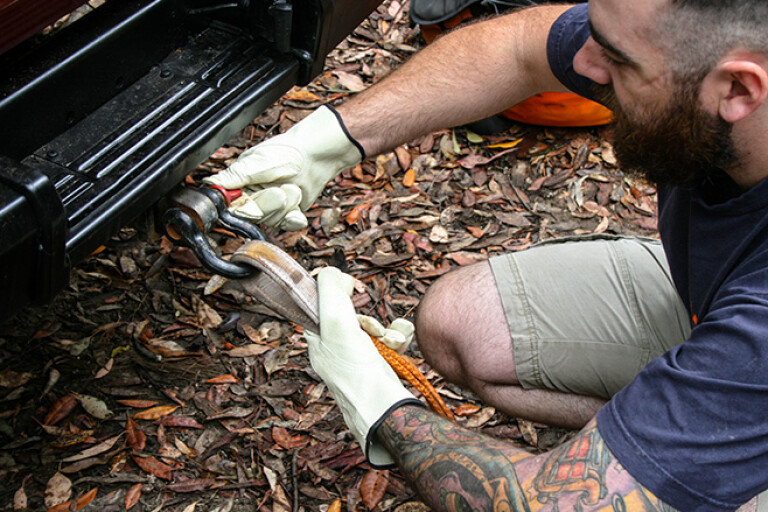
Rated D-shackles are quite common, although the bow shackles found in a recovery kit differ in that they’re able to accept a larger strap because of their shape and can handle loads in multiple directions – this is something that is vital in a recovery situation when things aren’t always perfect.
As rated bow shackles are expensive to manufacture, there are a large number of cheaper unrated items on the market. While these may have worked once for a friend of a friend, if things go pear-shaped, they can lead to a catastrophic situation. And when safety is on the line, it pays to pay.
The other major part you’ll find in a recovery kit is the snatch block. Despite the name, a snatch block has nothing to do with a snatch recovery and is instead a useful tool for winching. While it’s fairly common knowledge that a snatch block can be used in winching situations to effectively double your pulling power, they can also be used to redirect a winch line. If you, or another in your convoy, doesn’t have a winch, a snatch block is just dead weight.
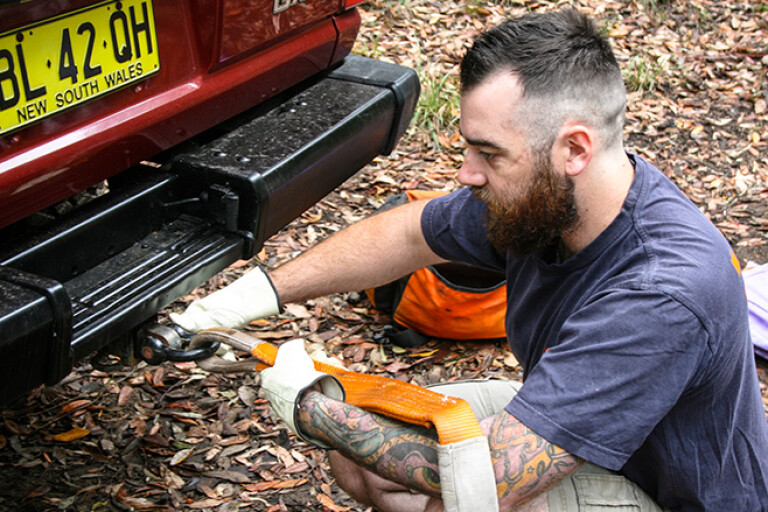
With enough line and two to three snatch blocks you can even winch yourself backwards out of a hole, or sideways if things really go south. It’s important to note that a snatch block should never be used with winch rope if it has previously been used with steel cable. The steel fibres can become embedded in the block and cause irreversible damage to your rope.
In years gone by the simple go-to was a drag chain. You just need to look at any 4x4 photo from the ’70s or ’80s and you’ll no doubt see lengths of chain used as bridle straps between recovery points or even in place of a tow strap. There are multiple issues with using a chain in either scenario. A chain isn’t able to absorb any energy, making it incredibly dangerous in a shock loading situation. If failure were to occur you’d suddenly find yourself with a section of chain hurtling towards your rear windscreen at fatal speeds. That said, they still have their uses in certain situations where adjustability is required, such as when hand winching; something that’s not possible with a strap.
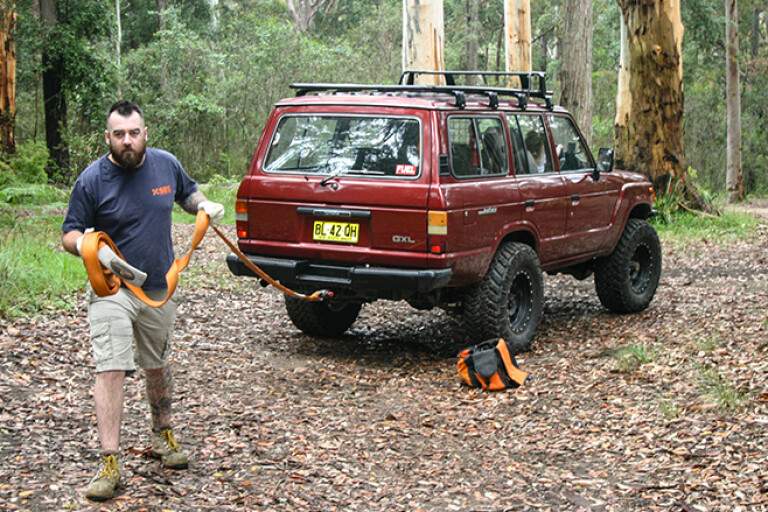
As with anything, you get what you pay for, and safety has no budget. You’re not talking big money for even the best you can buy, and saving $20 isn’t going to seem important when you’re stuck in a ditch with a broken strap or a shattered bow shackle.
WHAT YOU ACTUALLY NEED IN A RECOVERY KIT
- Snatch strap
- Tree trunk protector
- Winch extension strap
- Rated bow shackles
- Cable/strap dampener
- Snatch block
This article was originally published in 4x4 Australia February 2016.
COMMENTS